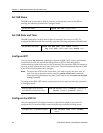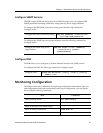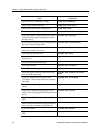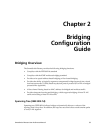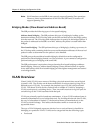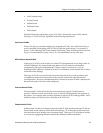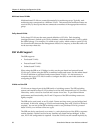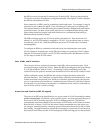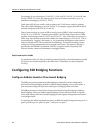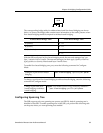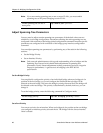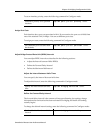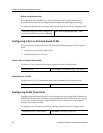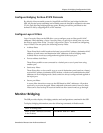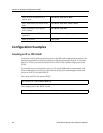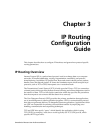
Chapter 2: Bridging Configuration Guide
38 SmartSwitch Router User Reference Manual
For example, if port 1 belongs to VLAN IPX_VLAN for IPX, VLAN IP_VLAN for IP and
VLAN OTHER_VLAN for any other protocol, then an IP frame received by port 1 is
classified as belonging to VLAN IP_VLAN.
Trunk ports (802.1Q) are usually used to connect one VLAN-aware switch to another.
They carry traffic belonging to several VLANs. For example, suppose that SSR A and B
are both configured with VLANs V1 and V2.
Then a frame arriving at a port on SSR A must be sent to SSR B, if the frame belongs to
VLAN V1 or to VLAN V2. Thus the ports on SSR A and B which connect the two SSRs
together must belong to both VLAN V1 and VLAN V2. Also, when these ports receive a
frame, they must be able to determine whether the frame belongs to V1 or to V2. This is
accomplished by “tagging” the frames, i.e., by prepending information to the frame in
order to identify the VLAN to which the frame belongs. In the SSR switching routers,
trunk ports always transmit and receive tagged frames only. The format of the tag is
specified by the IEEE 802.1Q standard. The only exception to this is Spanning Tree
Protocol frames, which are transmitted as untagged frames.
Explicit and Implicit VLANs
As mentioned earlier, VLANs can either be created explicitly by the administrator (explicit
VLANs) or are created implicitly by the SSR when L3 interfaces are created (implicit
VLANs).
Configuring SSR Bridging Functions
Configure Address-based or Flow-based Bridging
The SSR ports perform address-based bridging by default but can be configured to
perform flow-based bridging instead of address-based bridging, on a per-port basis. A
port cannot be configured to perform both types of bridging at the same time.
The SSR performance is equivalent when performing flow-based bridging or address-
based bridging. However, address-based bridging is more efficient because it requires
fewer table entries while flow-based bridging provides tighter management and control
over bridged traffic.
For example, the following illustration shows an SSR with traffic being sent from port A to
port B, port B to port A, port B to port C, and port A to port C.



